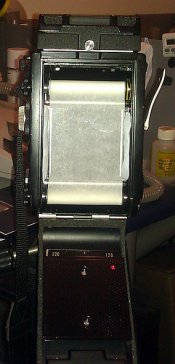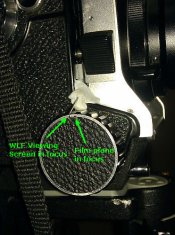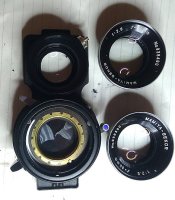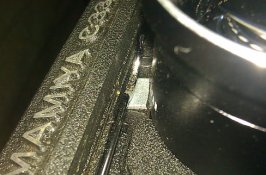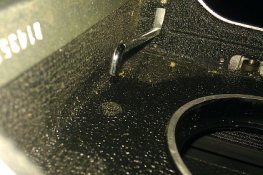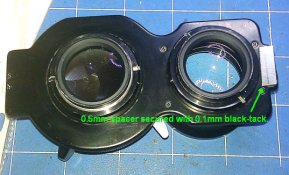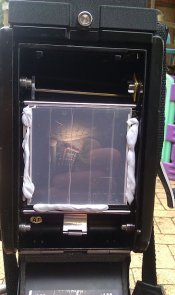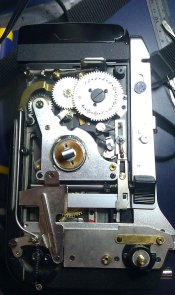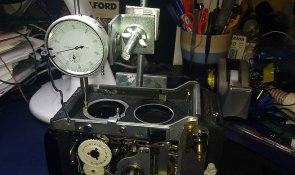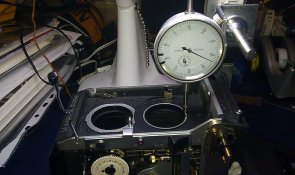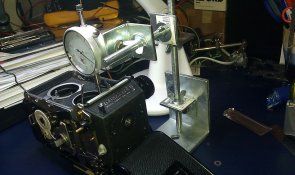Another update. After 2 nights of struggles and more discoveries I've now come full circle.
In summary, the apex of each lens was always at the same distance from the film plane, so I will now proceed with adjusting the height of the viewing screen as per the repair manual. Hopefully this will solve the discrepancy of 0.6mm lineal adjustment in focus required when focusing using the viewing screen or a ground glass on the lens plane.
Details: I was unable to unscrew any of the 3 screws needed to make the front of the camera parallel with the film plane. I tried heating them with a soldering iron, then found the camera body is a superb metal heatsink so I moved on to a butane torch ! That didn't melt the threadlock so I opted for freezing spray to try and shrink the screw faster than the hole hoping it would crack the threadlock but to no avail !!
So then I decided to change tact. Rather than just measuring to the front of the camera body, I decided to measure to the apex of each front lens element (see attached pics.).
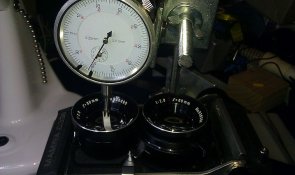
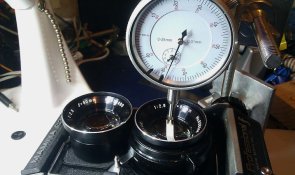
It then occurred to me that perhaps one of my lens shims was so thick because it was put in there to compensate for the camera front not being parallel.
To prove this I discarded my wooden slab and had a piece of plexiglass/perspex cut to support the camera on its film plane in a very steady fashion. Its dimensions were WxLxH=63x120x20mm
See pic.
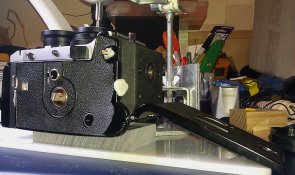
This gave me better repeatability in the measurements. I also bought a flat piece of thick off-cut perspex to rest everything on.
I then realised that by putting each shim back in place (a thick one for the viewing lens and a thin one for the taking lens) that when I measured to the apex of each lens' front element, they were nearly identical distances away from the film plane. In fact there was only a 0.03mm (=0.0012") difference !! Their apexes were aligned all along despite there being a 0.6mm fall across the entire camera front under the lens plate. As to whether using lens shims to solve this problem is an acceptable solution or not, I'm not sure. I say this because the lenses are still not perpendicular with the film plane (as the lens plate is parallel to the camera front but not parallel to the film plane). The lenses are just offset with shims so that their apexes are the same distance from the film plane. The lens axes are about 0.35 degrees tilted away from being perpendicular. I don't know how this affects critical focusing at any distances @f2.8. I suppose I could think about it some more and do the maths, but not right now.
I think what has happened is that in either a prior repair job or even when it was made in the factory, somebody decided to fix the anti-parallelism in this less than optimal manner.
Short of drilling out those screws I mentioned above the only other way I can think of to make the lens axes perpendicular with the film plane is to place a small shim between the front of the camera body and the lens plate at one end and re-shim the lenses.
Anyway, my next task is to adjust the viewing screen height to compensate for the 0.6mm lineal difference btwn it's light path and the film plane's light path.


